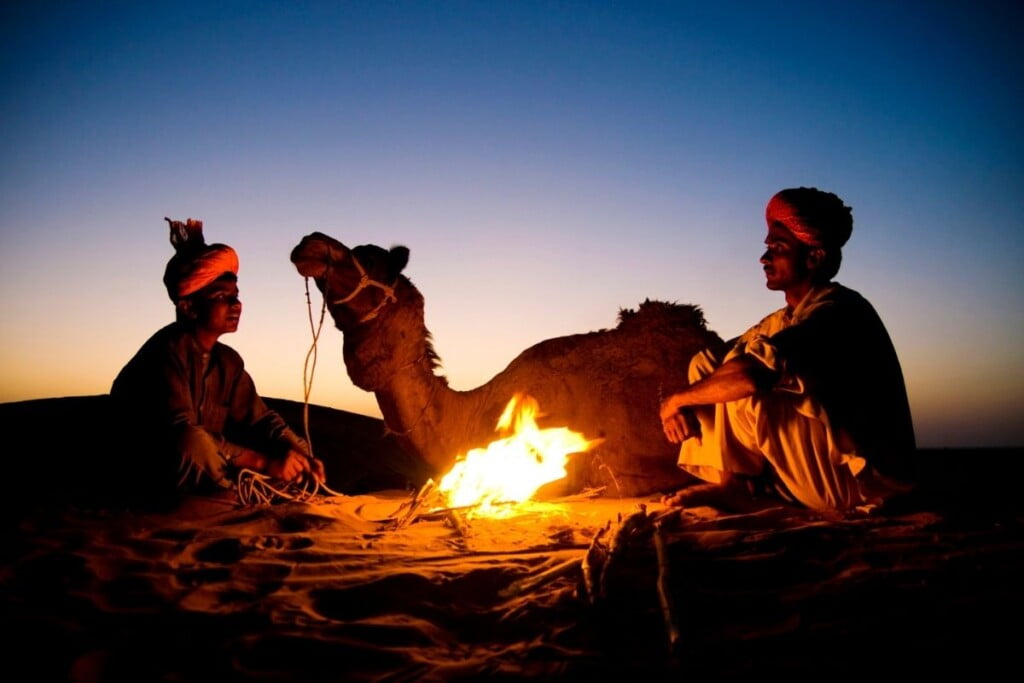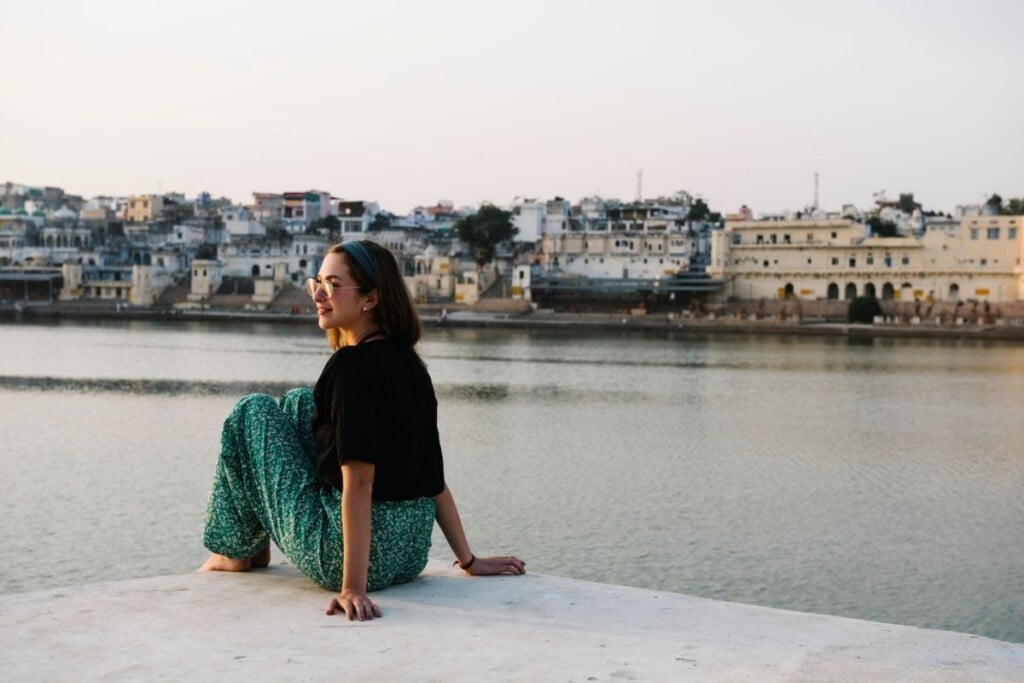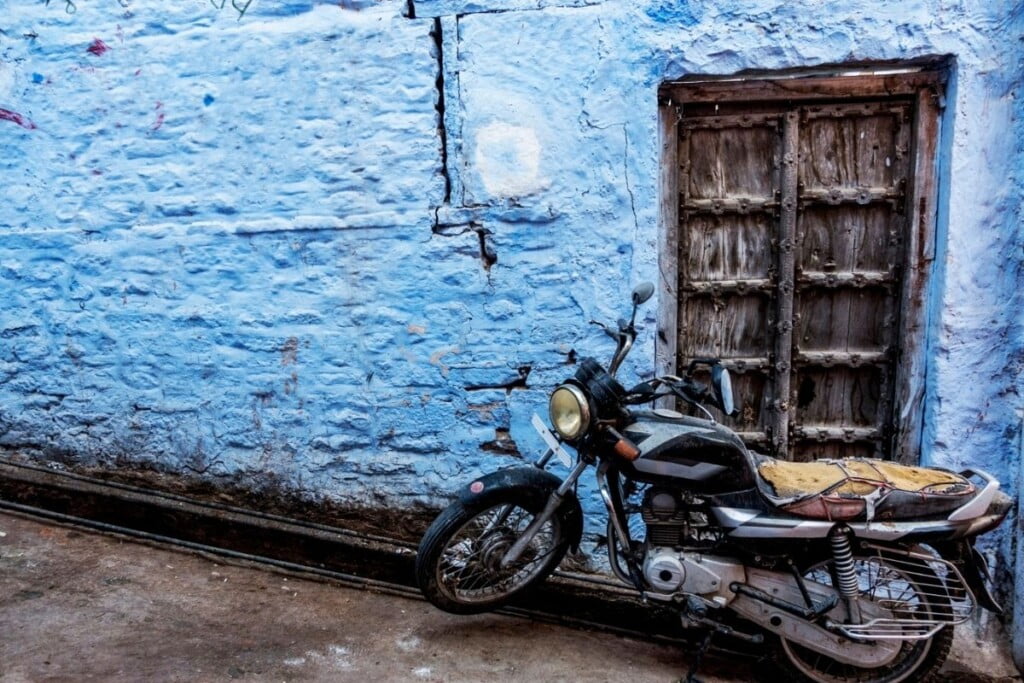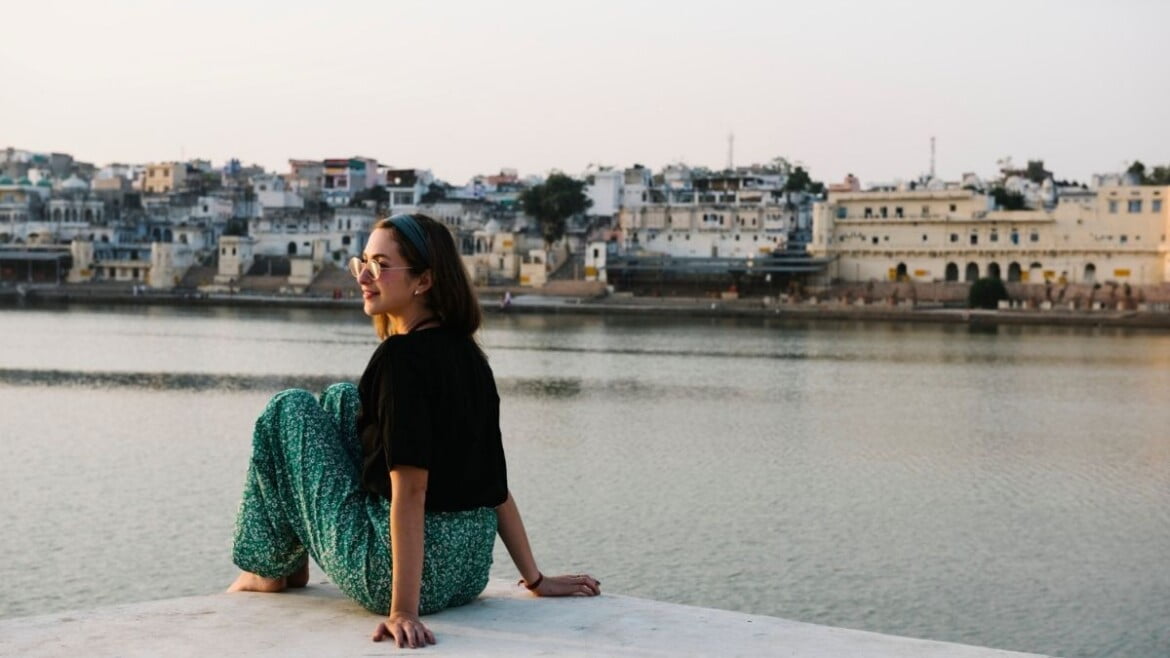There is never a time, whenever I think of spring and these lines do not come to my mind.
“Ghulon mein rang bhare, Baad-e-nau Bahar chale,
Chale bhi aao ke, gulshan ka karobar chale”
India is a country with diverse seasons, each having its own colors and hue to enjoy. Spring is a transition between two extreme seasons. When fog fades away and the Sun is not so sharp when Humans don’t require a hide from either Sun or the chilled breeze of winter mornings.
The wind calls you outside to celebrate life, joy, and new possibilities. The crops are harvested, and Flowers get vibrant colors.
Donna wanderer will take you on a fantastic tour in the spring realm throughout India, offering the best experience for solo and group travelers for those seeking female travel.
We are going to explore a few states in this blog series.
Everthing You Need To Know About rangeelo Rajasthan Travel
The state of diverse culture offers a lot to explore religion, wildlife, spirituality, fun, music, and food. Due to various things the state provides, it is often called “Rangeelo Rajasthan.” Though we can create divisions based on different things to explore, we will cover those things that are must-visit.
Rajasthan is surrounded by a desert, making the climate extreme in both winters and summers. Spring is the perfect time to visit the state.
Jaipur

Forts and other things
Established by Maharaja Sawai Jai Singh, the city is full of haveli-type architecture. The shops are built on the sides of the palace in the old structure. Pink city has forts, temples, exotic markets, and everything you can think of! One should plan 2-3 days to absorb the city’s essence. Things you need to cover in the city and around are;
Amber fort and palace, nestled atop a hill, contains Sheesh Mahal, Sukh Niwas, and Deewan-e-Khas. Hire a local guide to know everything about the fort. This is a picture-perfect place, and You should not forget to enjoy the music outside the palace, and the Music & Light shows in the evening.
Nahargarh Fort, also visible from the Amber Fort, is built inside the rocky ridges of the Aravalis. It was built as a part of the city’s defense circle and the Amber and Jaigarh forts. The former served as a hunting retreat for the royal family. Today it is a splendid viewpoint to watch glorious sunsets over the pink city.
Jaigarh Fort, a marvel of sandstone construction, has stood firm for about 300 years and is a jewel to the Cheel ka Tilla on the Aravalis. The center of artillery production houses one of the main attractions, the Jaivana cannon, the giant cannon on wheels only used once to date.
The city palace showcases the life of the Royals and information about them. One can find the achievements of the Maharajas of Jaipur here. The castle has shops built inside to buy fancy Juttis, suits, etc. Appreciate the fine architecture and engineering of the palace and artifacts, like ivory chess pieces, victorian crosses, polo balls, pictures, and clothes. You can purchase oxidized jewelry and other things from the palace shops.
Hawa Mahal provides an excellent view of Jantar Mantar and the city palace. The monument is designed to produce a cooling effect. Jantar Mantar, the largest stone sundial and the astronomical observatory, is close to Hawa Mahal.
Albert hall museum has witnessed cultural and historic changes throughout time immemorial. The oldest museum in India is also the storehouse of the rich heritage and culture of Rajasthan. An Egyptian mummy is also stored here.
Religion and spirituality
The royal lifestyle of India is incomplete without the innate belief of the masses in God and religion. Temples were built and made into learning centers in the past. Though the British eroded this cultural identity of India, still the Priests carried the religious legacy in the temples.
The famous temples of Jaipur include Galtaji temple, Akshardham temple, Moti Dungri temple, Govind dev Ji temple, and Birla Mandir.
Food and Markets
Many shops and bazaars can be found here worth exploring, and the best part is that they are either inside the forts or surrounding them. Johari Bazar near Hawa mahal is known for Handicrafts, furniture, and jewelry. Tripolia Bazar for those who love Lac Jewellery, and Bapu Bazar in the heart of Jaipur, is one of the busiest streets in Jaipur. Pro tips; Park cars somewhere outside. Aravali Bazar for the homedecors
Do not forget to stop at LMB, the famous Laxmi Mishtan Bhandar, to eat the Royal thali! And Not to mention, ask someone for the Marwadi pagdi if you have time. Flaunt it throughout the travel and enjoy that Rajasthani vibe a bit extra!
Ajmer and Pushkar

On the way to Jodhpur are Ajmer and Pushkar, snuggled close. Twin cities are religious-spiritual centers in Rajasthan. Ajmer comes from ‘Ajay Meru,’ literally meaning the desert of Ajay. Ajay Chauhan, one of the prominent rulers and consolidators of the Chauhan dynasty, was the founder of this city. Many portions of the town were converted after the Islamic invasions of the city.
Ajmer Sharif, the famous attraction of the city, was built as the resting place of Sufi saint Moinuddin Chishti, who has spread Islam’s ethical and spiritual values among the masses. The Dargah was made by Humayun, the Mughal king, and is considered one of the holy places for the followers of Islam.
Ana Sagar Lake, a magnificent lake built by the grandfather of Prithvi Raj Chauhan, is a heaven for those who love photography. The lake is the hotspot for the best sunsets in the area. Tourists also visit Daulat Bagh Gardens and the Khobra Behroon temple– the other two famous attractions of Ajmer which surround the lake.
Adhai din ka Jhopda, the famous creation that is said to have been built by Qutbuddin Aibak in 60 hours on the orders of Ghori, is one of those places which are must-visit. The construction was done on a Sanskrit Vidyalaya built by the Great king Ajay Pal Chauhan. If you are a cultural enthusiast, you can still find similar engravings there.
You should not miss the Nareli Jain temple. The peaceful yet strikingly fantastic temple is located in the Aravali hills. Made in marble, the site blesses with beautiful views.
Pushkar is 1 hour away from Ajmer by road. The city holds religious importance in the Hindu culture. The Pushkar lake is mostly the journey’s starting point, followed by the only Brahma Mandir in India. There is a massive crowd at the temple at any time of the year. If you want to enjoy the hilltop, you must visit the Savitri Devi temple at the base. Enjoy camel safari and visit the Varah Mandir, built by Anaji Chauhan. The temple was destroyed by Aurangzeb and later reconstructed by Sawai Jai Singh of Jaipur in the Maru Gurjar style of temple construction.
We shall now move to the second largest city of Rajasthan. The town is famous as Blue city. The city is no other than Jodhpur, a perfect mix of the Marwari lifestyle, fragrant markets, Colorful Mojris, etc. The city’s name is befitting as most of the architecture is made in blue.
Jodhpur

The origin of the city dates back to 1459 AD. Built by Rao Jodha, the chief of the Rathore clan. The town was made in the place of the ancient capital Mandore of the state of Manwar.
The spectacular Mehrangarh fort is packed with rich history and legends and still bears the prints of cannonball attacks courtesy of the armies of Jaipur on its second gate. The fort is well known for its exquisite latticed windows, intricately decorated windows, and walls of Moti Mahal, Sheesh Mahal, and Phool mahal.
Moti Mahal is the hall where royal families held their audience. The gallery has flint glass windows and 5 nooks that allow queens to listen to the proceedings in the Srinagar Chowki, the royal throne of Jodhpur.
Phool Mahal is the most exorbitant of all halls in this palace as it was used as a pleasure dome by Maharajas. The lobby is plated with Gold brought from Ahmedabad.
Sheesh, Mahal is a marvelous piece of architecture. Its walls are adorned with mirror work that stretches along with ceilings and the floor.
The fort also contains Chamunda Mata Mandir, referred to by Rao Jodha. So her idol was brought to the Mehrangarh defense. There are two lakes adjacent to the fort Ranisar and Padmasar.
Jaswant Thada, sometimes referred to as the Taj Mahal of Rajasthan, was built towards the end of the 19th century as a tribute to the leader Jaswant Singh who ruled the city of Jodhpur. It displays the portraits of the rulers of Jodhpur along with informative didactics.
Umaid Bhavan Palace, a marvel of architecture, was built in 1929 to counter a famine that hit the then state. It was previously known as Chittar Palace, but today it serves as Asia’s most prominent residential hotel.
Visit Guda village, a Bishnoi community village home to exotic wildlife and culture. Stay there and explore the exotic Marwari lifestyle for a day.
Toorji Ka Jhalara
Situated in the middle of the Sardar Bazar is this multi-stepped Bavdi is, one of the exquisite architectural pieces made in Rajasthan. This reservoir was built-in 1740 by Queen Tawarji and is a picture-perfect spot for your visit.
Religion and spirituality
Religion is an integral aspect of Indian culture. It has always been so there are various temples built in the Marwari and Maru Gurjar styles.
Some famous temples include Mandaleshwar Mahadev temple, Mahamandir, and Chamunda Mata Mandir. The Mahamandir is supported by 84 pillars and ornamented with detailed designs and figures depicting various postures of Yoga.
Market and Food
Jodhpur is home to one of the oldest bazaars in India, famous for tie and dye, furniture, Handicraft items, and textiles. People from all over the world come to shop here.
Sardar Bazaar, which houses more than 7000 shops, was built by Maharaja Sardar Singh, with Ghantaghar as the epicenter of this market. The bustling market offers block-printed daris, bedsheets, poufs, and Jackets. You can find indigenous juttis and other home decors.
If you’re a collector of things, visit the Lalji Handicrafts, you can find old and new antique pieces here. Cute teapots, vases, or makeup boxes, you can buy anything! It is home to old closets, old doors, chests, etc.
If you love food, you should visit Spice paradise. They feed you and teach you how to prepare fantastic food. There are posh stores that use a mix of modern and traditional art and produce the best props.
Udaipur

As it is popularly known, the white city was established by Maharana Udai Singh II as the new capital of the Mewar kingdom. The town is hemmed by the lush green hills of Aravalis and is located around azure water lakes. Let’s explore the sites of the city.
Palaces and Lakes
Udaipur city palace, located on the banks of Lake Pichola, has served as the main seat of power and abode to the Royals. It is now an assortment of Mahals, courtyards, corridors, rooms, hanging gardens, etc. A statue of Mahara Pratap made in bronze, and his favorite horse Chetak is situated here.
Lake Palace, A sight to behold, was built on the island near Jagmandir in lake Pichola, facing east. This was called Jag Niwas. Once a summer palace, it serves as a hotel now.
Monsoon Palace was built in the 19th century on the Bandara hills. Its founder Maharaja Sajjan Singh wanted to make it into an astronomical observatory. It offers spectacular views of the city and around.
Jagmandir, or the famous ‘Lake Garden Palace,’ is built on an island in Pichola Lake. This was the summer abode of the Royal family and a spot to hold parties. Later it became the inspiration for Shahjahan to build the Taj Mahal.
There are various lakes in the city, such as Fateh Sagar, Pichola, Udai Sagar Lake, Dudh Talai Lake, Jaisamand Lake, and Badi Lake. Amongst them, the most famous are Pichola and Fateh Sagar lakes.
Pichola comes from the village nearby. The islands of Jag Niwas and Jagmandir are housed in this lake. Boat rides to this lake offer breathtaking, mesmerizing sunsets. On the north of Pichola is Fateh Sagar Lake, bordered by hills and woodlands.
Religion, spirituality, and Markets
The city has a lot of temples adorning intricate carvings and sculptures on its walls. Maru Gurjar and Nagara are among the prominent styles of temple architecture. Jagadish Mandir, a three-storeyed architectural marvel, is dedicated to Lord Vishnu.
Another one is the Sahastrabahu temple, which is also dedicated to Lord Vishnu. Saharabahu means one with a million arms. Sunsets and Sunrises are excellent from here.
The city’s markets are on par with those in Jaipur and Jodhpur. A few famous ones are Bapu Bazar, Bada Bazar, Hathipole, Chetak circle, and Shilpagram.
Though one spring might seem short to cover the state, The journey never ends. This is just the beginning. If you wish to explore more, go on to explore Jaisalmer, Chittod, and other regions. Stay tuned with Donna wanderer and check out our next blog in the series!
Visiting a culturally-rich state is fun. It’s never a disappointment to listen to stories narrated by those who stand the tests of times and the tales of the old and foregone. Rajasthan is full of bardic stories, which never fail to attract you to this Royal retreat.
“Padharo mhare des soon!”
Khamma Ghani!



